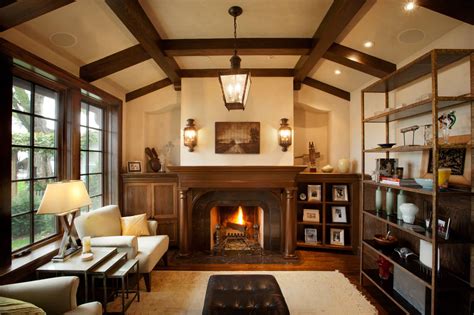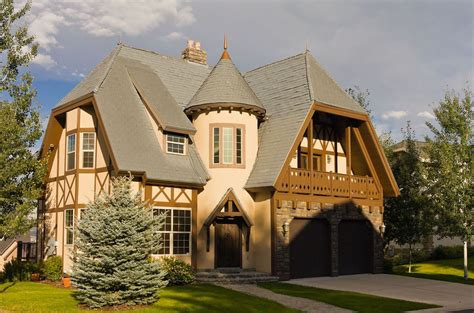tudor style housing | tudor style house characteristics tudor style housing The Tudor architectural style is the final development of medieval architecture in England and Wales, during the Tudor period (1485–1603) and even beyond, and also the tentative introduction of Renaissance architecture to Britain. It followed the Late Gothic Perpendicular style and, gradually, it evolved into an aesthetic more consistent with trends already in motion on the continent, evidenced by . With these menus, it is easy to accommodate everyone’s different fasting for Lent. Although I love to cook 1950s menus , I usually use 1940s and 1930s recipes because they use .
0 · tudor style house interior characteristics
1 · tudor style house characteristics
2 · tudor home pictures
3 · traditional tudor style homes
4 · original tudor style house
5 · old tudor style homes
6 · old english tudor style homes
7 · famous tudor style houses
United States presidential election of 1948, American presidential election held on Nov. 2, 1948, in which Democratic Pres. Harry S. Truman defeated Republican Thomas E. .
What is a Tudor-style house? Known for pitched gable roofs, decorative wood trim, and old-world appeal, this architectural style was once a .

The Tudor architectural style is the final development of medieval architecture in England and Wales, during the Tudor period (1485–1603) and even beyond, and also the tentative introduction of Renaissance architecture to Britain. It followed the Late Gothic Perpendicular style and, gradually, it evolved into an aesthetic more consistent with trends already in motion on the continent, evidenced by . Tudor style houses, also called Tudor Revival or Mock Tudor, are two-to-three .
Known for blending practicality with aesthetics, Tudor architecture originated in England and .
From the smaller cottage-style Tudors to the larger and luxurious house plans, . The Tudor Revival-style home embraces unusual elements, a storybook form, and a touch of rebellion. Here's how to identify a Tudor-style house. While not quite as common, a well-known and distinguishable house style you'll still see in most major Southern cities is the Tudor style. Tudor-style architecture applies to both small and large homes—a smaller dwelling .
Tudor architecture has a rich and fascinating history, and its influence is present . Anthony Masterson. The facade of a Tudor-style home is often dominated by one or more prominent, steeply pitched cross gables. This home features two front gables and brick wall cladding.Brick became the preferred wall surface for even the most modest Tudor cottages after masonry veneering was popularized in the 1920s. The arches surrounding the portico .One of the best examples of a Tudor style house in Montgomery County, Maryland is the landmark Newlands/Corby Mansion in Chevy Chase at the juncture of Chevy Chase Circle, Connecticut Avenue and Brookville Road. This Tudor home has a variety of dormer styles, window types and richly decorated chimneys that make it a highly stylized Tudor design .
Tudor House Materials . Materials and form are what distinguish a Tudor Revival home from other architectural styles. From the onset of the style’s popularity in the United States, the focus was, in part, to be what a Colonial . A Tudor-style home commonly features a steeply pitched roof, prominent cross gables, decorative half-timbering, and tall, narrow windows with small windowpanes. Dark half-timbering, trim, and brick are often accentuated by the lighter colors of cream, light brown, or white stucco or stone walls.Zillow has 104 homes for sale in New York NY matching Tudor Style. View listing photos, review sales history, and use our detailed real estate filters to find the perfect place. Skip main navigation. . Tudor Style - New York NY Real Estate. 104 results. Sort: Homes for You. 29-12 172nd Street, Flushing, NY 11358. LISTING BY: EXP REALTY .The Origins of Tudor Architecture. Tudor Period Houses originated in England between the late 15th and early 17th centuries, marking a shift from medieval Gothic structures to more personal, home-oriented spaces. A few things shaped this architectural transition: Key aspects of the Tudor period that shaped this architectural style:
Tudor-Style House What is a Tudor-style house? Updated June 25, 2024. Tudor is an architectural style that was prevalent in England and Wales during the latter part of the Middle Ages, beginning . Tudor architecture, a style that flourished in England from the late 15th century to the early 17th century, is one of the most recognizable and beloved architectural styles in British history.Spanning the reigns of the Tudor monarchs (1485-1603), this architectural period left an indelible mark on England’s built landscape, from humble cottages to grand palaces.
tudor style house interior characteristics
Built in 1575 with extensions in Tudor, Georgian and Queen Anne style. It was the ancestral home of the Molyneux family, the Earls of Sefton until the last Earl died in 1972. Inside the home is Edwardian in style. The facade is from 1702. The hall is currently closed for restorations (which will finish in Autumn 2022) but the Park is open for . Tudor homes look like something straight out of a fairytale, with a charming style that takes its cues from medieval English architecture.Their distinctive wood-faced facades and white-stuccoed walls were popular with well-to-do homeowners from the the mid-19th century until World War II; since Tudors were built with expensive materials like timber and stone, with .Girouard, Mark, Robert Smythson and the Elizabethan Country House (1983). Henderson, P., The Tudor House and Garden: Architecture and landscape in the sixteenth and early seventeenth centuries (Paul Mellon Centre for Studies in British Art 2005). Howard, M., The Buildings of Elizabethan and Jacobean England (2007).Characteristics of Tudor Style Houses. Tudor Homes Today: A Guide for Architecture Enthusiasts. 1. Steep Gable Roofs. One of the most visually striking features of Tudor architecture is the steeply pitched gable roof, which is both functional and aesthetically appealing.. Functionality: Steep roofs prevent water buildup by allowing rain and snow to slide off easily, a necessity in .
dior foundation spf 50
They are particularly popular in the United States where many Tudor style homes were built between 1890 and 1940, says Wentworth Studio. There are some simple ways to tell if a house is a genuine English Tudor house or simply a replica. The first thing to look at is the external beams. In real Tudor houses, the wooden beams were an integral . Here are some facts about Tudor houses. One of the most distinctive things about a Tudor house was the black and white effect (see image below), because of their exposed wooden frames. There are many Tudor houses in England, some of which are still being lived in today. The town of Lavenham in Suffolk is [.]
What is a Tudor-style house? Known for pitched gable roofs, decorative wood trim, and old-world appeal, this architectural style was once a lot more common.
dior skin forever foundation
tudor style house characteristics
The Tudor architectural style is the final development of medieval architecture in England and Wales, during the Tudor period (1485–1603) and even beyond, and also the tentative introduction of Renaissance architecture to Britain. Tudor architecture refers partly to the architectural style that emerged between 1485 and 1603 when artisans built sophisticated two-toned manor homes combining Renaissance and Gothic design elements. Identified by their steeply pitched rooflines and decorative half-timbering, a Tudor-style house can be anything from an elaborate mansion to a modest suburban residence. These charming structures typically mimic classic English architecture with .

Tudor style houses, also called Tudor Revival or Mock Tudor, are two-to-three-story homes with brick exteriors featuring large portions of white stucco and decorative half-timbering. These homes have a romantic and slight medieval appearance, making them a truly unique home style.
Known for blending practicality with aesthetics, Tudor architecture originated in England and made a lasting impact that extends to modern designs today. This guide explores the origins, defining features, and modern adaptations of Tudor-style homes. From the smaller cottage-style Tudors to the larger and luxurious house plans, Tudor homes come in a variety of sizes to suit small and large families. These homes range from around 1,500 square feet to 7,500 square feet with the majority averaging 2,500 square feet. The Tudor Revival-style home embraces unusual elements, a storybook form, and a touch of rebellion. Here's how to identify a Tudor-style house.
While not quite as common, a well-known and distinguishable house style you'll still see in most major Southern cities is the Tudor style. Tudor-style architecture applies to both small and large homes—a smaller dwelling looks like a storybook cottage, while larger versions resemble an English manor house.
tudor home pictures

to £900. from £900. Ø 34 - 36 mm. Ø > 36 mm. Dial: Silver. Dial: Black. Dial: Champagne. 1960's. 1970's. 1950's. Date. Chronograph. Weekday. Automatic. Manual winding. Quartz. Bracelet material: Leather. Bracelet material: Steel. Bracelet color: Black. Bracelet color: Steel. Bracelet color: Brown. Swiss watches. Vintage watches. Mechanical watches.As mentioned in the intro, the world of Omega in the 1950s was defined by the trilogy of the Seamaster, Railmaster, and the Speedmaster in 1957. So it would be hard and pretty much stupid to ignore them in a list of the watches that defined the 1950s for Omega. We’ll kick things off with The Omega Seamaster 300 . See more
tudor style housing|tudor style house characteristics



























